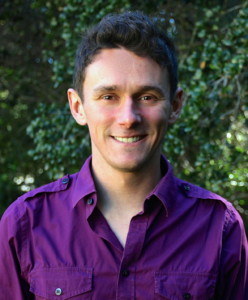Scot Miller joined the Dept. of Environmental Health and Engineering at Joh ns Hopkins as an assistant professor in January. Miller studies emissions of different greenhouse gases and air pollutants. He uses observations of these gases collected in the atmosphere — from aircraft, telecommunications towers, and satellites. Miller combines these observations with atmospheric and statistical modeling to understand where, when, and how these emissions occur. His existing projects focus on regional to national-scale questions: methane emissions in in the Arctic, nitrous oxide emissions from US agriculture, and methane emissions from energy industries in the US and China. For example, his previous work showed that a quarter of all methane emissions in the US are from three states — Texas, Oklahoma, and Kansas, and most of these emissions are due to leaky oil and gas infrastructure, a contrast with official government emissions estimates. His other projects show that arctic wetlands in North America are a much larger methane source than estimated by most process-based models.
ns Hopkins as an assistant professor in January. Miller studies emissions of different greenhouse gases and air pollutants. He uses observations of these gases collected in the atmosphere — from aircraft, telecommunications towers, and satellites. Miller combines these observations with atmospheric and statistical modeling to understand where, when, and how these emissions occur. His existing projects focus on regional to national-scale questions: methane emissions in in the Arctic, nitrous oxide emissions from US agriculture, and methane emissions from energy industries in the US and China. For example, his previous work showed that a quarter of all methane emissions in the US are from three states — Texas, Oklahoma, and Kansas, and most of these emissions are due to leaky oil and gas infrastructure, a contrast with official government emissions estimates. His other projects show that arctic wetlands in North America are a much larger methane source than estimated by most process-based models.
 ns Hopkins as an assistant professor in January. Miller studies emissions of different greenhouse gases and air pollutants. He uses observations of these gases collected in the atmosphere — from aircraft, telecommunications towers, and satellites. Miller combines these observations with atmospheric and statistical modeling to understand where, when, and how these emissions occur. His existing projects focus on regional to national-scale questions: methane emissions in in the Arctic, nitrous oxide emissions from US agriculture, and methane emissions from energy industries in the US and China. For example, his previous work showed that a quarter of all methane emissions in the US are from three states — Texas, Oklahoma, and Kansas, and most of these emissions are due to leaky oil and gas infrastructure, a contrast with official government emissions estimates. His other projects show that arctic wetlands in North America are a much larger methane source than estimated by most process-based models.
ns Hopkins as an assistant professor in January. Miller studies emissions of different greenhouse gases and air pollutants. He uses observations of these gases collected in the atmosphere — from aircraft, telecommunications towers, and satellites. Miller combines these observations with atmospheric and statistical modeling to understand where, when, and how these emissions occur. His existing projects focus on regional to national-scale questions: methane emissions in in the Arctic, nitrous oxide emissions from US agriculture, and methane emissions from energy industries in the US and China. For example, his previous work showed that a quarter of all methane emissions in the US are from three states — Texas, Oklahoma, and Kansas, and most of these emissions are due to leaky oil and gas infrastructure, a contrast with official government emissions estimates. His other projects show that arctic wetlands in North America are a much larger methane source than estimated by most process-based models.Miller is particularly interested in understanding regional-scale greenhouse gas fluxes from wetlands, and his previous work has focused on high-latitudes. In his future work, Miller is interested in understanding CH4 and CO2 fluxes from mid-latitude wetlands (e.g., the Chesapeake Bay region) and how those sources and sinks compare to anthropogenic emissions in the region.
